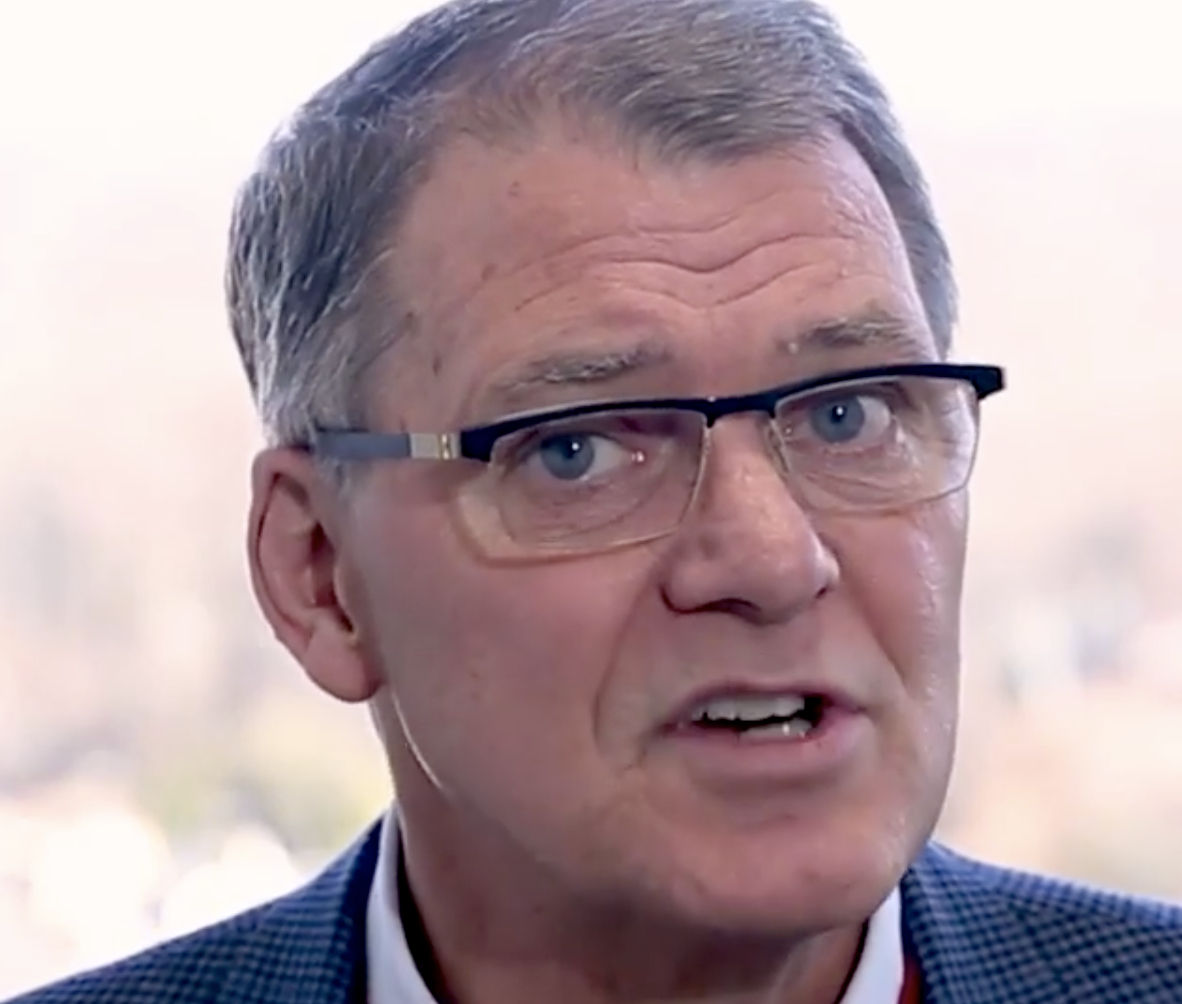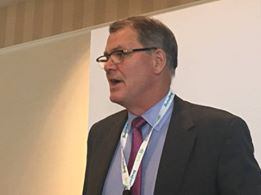CFF ‘Venture Philanthropy’ Model Crucial to CF Breakthroughs and Group’s Success, CEO Says

When the Cystic Fibrosis Foundation (CFF) was established in 1955, most people with cystic fibrosis (CF) didn’t make it to their sixth birthday. Today, the average life expectancy of a CF patient is 47 years.
To date, the U.S. Food and Drug Administration has approved 12 CF therapies. Three of them are CFTR modulators that treat the basic disease-causing defect, benefiting 60 percent of all patients, and more therapies are on the way.
Preston W. Campbell III, the CFF’s president and CEO, directly attributes this dramatic improvement to the foundation’s philosophy of “venture philanthropy.”
“We are now in Phase 3 CFTR trials that, if successful, will mean that as early as next year, more than 90 percent of all individuals with CF will have a highly effective therapy targeting CF’s basic defect,” he said. “More therapies that treat the complications of CF are in the pipeline than ever before.
“It begs the question: how did all of this happen?”
Campbell answered that during his March 26 presentation, “Patient advocates taking a real stand in drug development: How the CFF worked with biotech and pharma to find a cure,” at the 2018 World Orphan Drug Congress USA in Oxon Hill, Maryland.
Early investments were critical, Campbell says
Back in 1960, the Bethesda, Maryland-based foundation broke ground by establishing a Care Center Network to provide multidisciplinary care. Within five more years, it had formed a patient registry.
With only $400,000 in the bank, it would also commit $11 million to research, Campbell said. “Five years later, in 1985, the basic CF defect was identified, and in 1989, the CFTR gene was discovered. That opened the floodgates,” he added.
Campbell’s predecessor, Robert J. Beall, created the Therapeutics Development Program — now called its Venture Philanthropy Model — in 1998 to entice industry to focus on CF, and specifically on CFTR as a target. Its three components were financial assistance, research tools and scientific advice, and a clinical trials network.
“We would lower the risk for industry to come into the CF space. We also made our research tools and scientific advice freely available, and we also embedded the best scientists in the world in these industry programs,” said Campbell, who took over from Beall as head of the CFF in January 2016. “Finally, in order to make sure clinical trials were safely and efficiently done, we created a clinical trials network that originally had seven centers and now has 89.”
In the beginning, CFF’s investments were typically in the $1.5 million range. Ultimately, the foundation invested more than $100 million in Aurora and its successor, Vertex Pharmaceuticals, whose headquarters are in Boston.
To date, the FDA has approved three Vertex CFTR modulators: Kalydeco (ivacaftor) for patients with the G551D mutation in the CFTR gene (2012); Orkambi (lumacaftor/ivacaftor) for patients who are homozygous for F508del, the most common mutation in the CFTR gene (2015); and Symdeko (tezacaftor/ivacaftor) for homozygous F508del patients as well as others (2018).
“Payments are milestone-based, so we pay for success,” Campbell said. “A scientific advisory committee determines if milestones are met and if the project should continue. Successful programs offer a return on our investment, so if the program is foundering, we shake hands and walk away.”
Goal of ‘mission accomplished’ in 20 years
Successful programs offer the CFF payback through royalties while opening up the possibility of new treatments, which help CF patients to have longer, healthier lives, Campbell said. “That’s all we really cared about, but we’ve also seen that success in these programs also helps biotech and pharmaceutical companies, because they’re able to focus on unmet medical needs that they wouldn’t otherwise have done.”
He thinks the CFF is just 15 to 20 years away from completing its mission, which is to wipe out CF for good.
“All of this sounds pretty straightforward, but let me promise you, it wasn’t. When I came on board, Bob [Robert Beall] and I knocked on a lot of doors.
“We had the biology. But industry found lots of ways to tell us ‘no,’ because they didn’t think it was worth it to work in the orphan diseases space — and academia didn’t believe in what we were doing,” Campbell said.
“There are a number of robust programs we think will provide options for people with CF and hopefully competition as well,” he added, estimating that within two years, 93 percent of all CF patients will be covered by these medications.
Accelerating discovery and treatment
Still, that leap “leaves 7 percent with nothing, and we’re very committed to make sure we treat that last 7 percent,” Campbell said.
To that end, the CFF is working with Spyryx Biosciences, Ionis, Enterprise Therapeutics, ProQR Therapeutics, and others on small molecule screening, DNA, mRNA, and the modulation of other ion channels.
“We’re investing heavily in other approaches as well,” he said, noting that the CFF maintains a Massachusetts lab staffed with 40 researchers.
“Even if we address the basic defect, we’re not done, because 50 percent of our patients — even with these therapies — will still need anti-inflammatory, airway clearance, anti-infective, and nutrition and GI [gastrointestinal tract] therapies that address CF because of their residual disease,” he said. “We’re, in fact, spending more today on these than we are on CFTR modulators.”
Meanwhile, the pace of discovery is accelerating.
The CFF met with 140 companies in 2017, and its medical/scientific budget has more than doubled in the past six years, from $89 million in 2012 to $188 million in 2018. Likewise, the number of industry collaborations has skyrocketed, from six in 2012 to 39 in 2017 — and the foundation will perform at least 50 clinical trials this year.
“Our near-term goal is that 100 percent of people with CF will have access to CFTR-based modulators, and that they all have access to other therapies they need, such as anti-microbials, anti-inflammatories, mucolytics and nutritionals,” Campbell said. “And our long-term goal is to allow someone with CF to say, ‘I used to have CF.’
“At that point, I think we’ll be done.”








